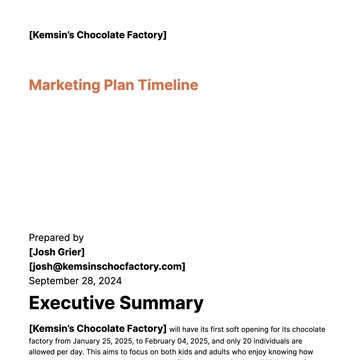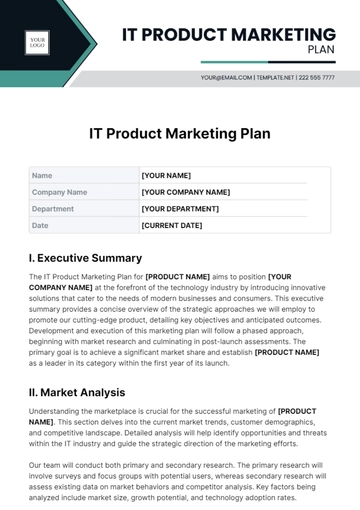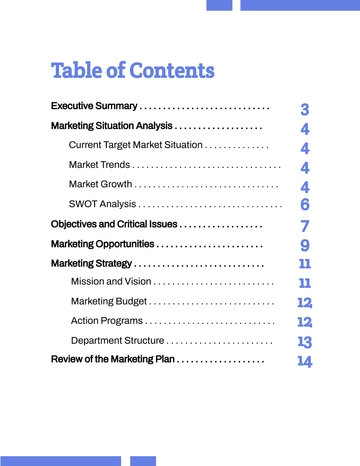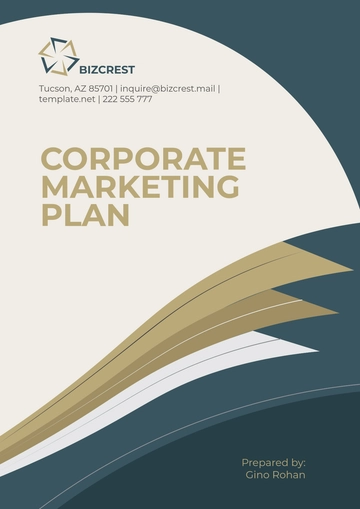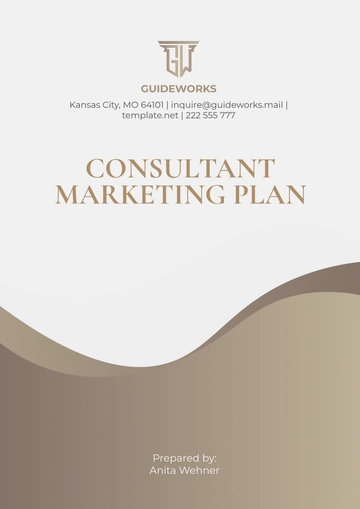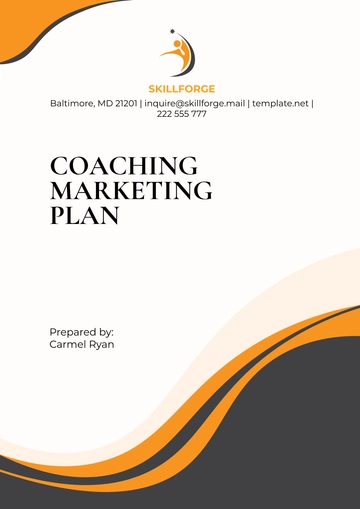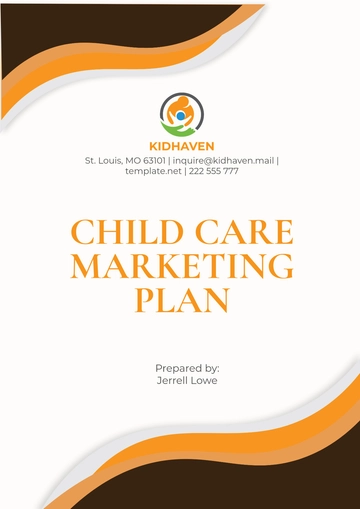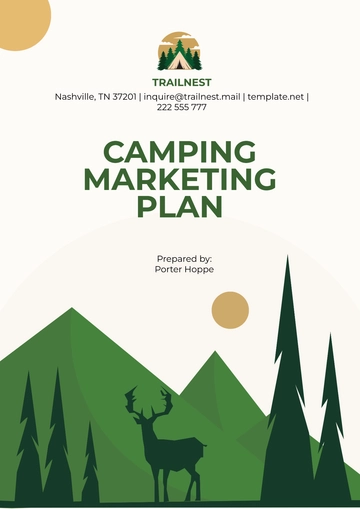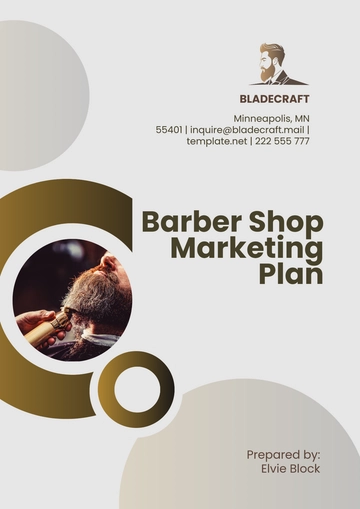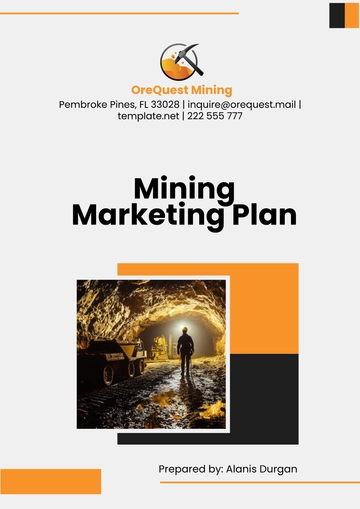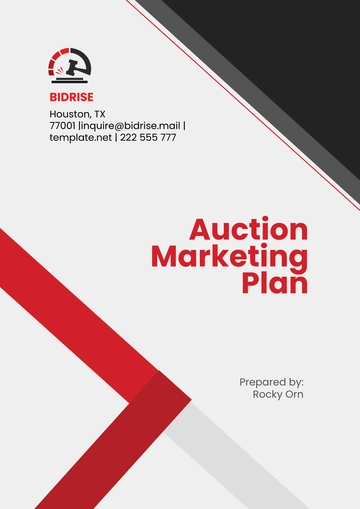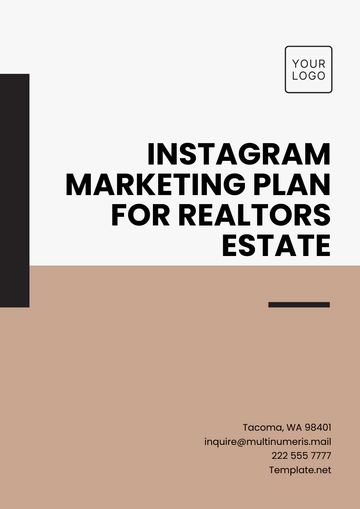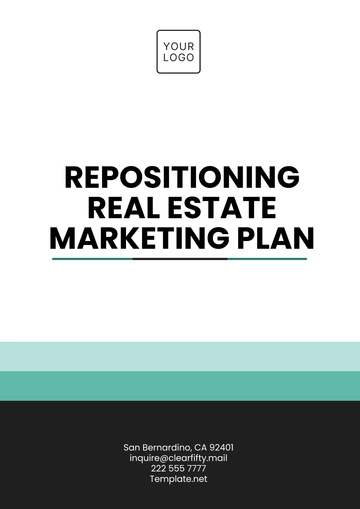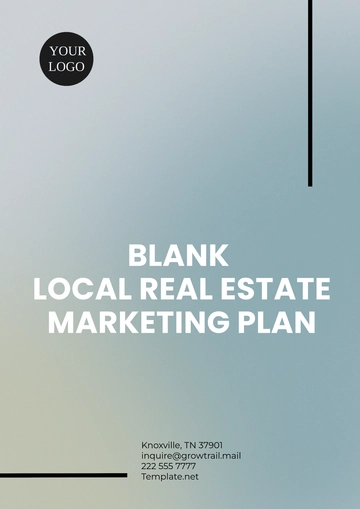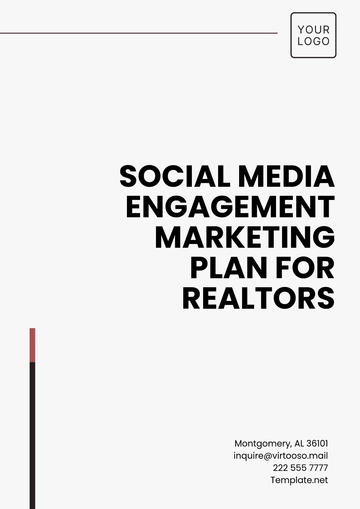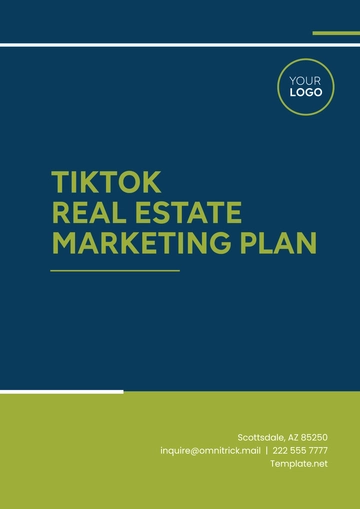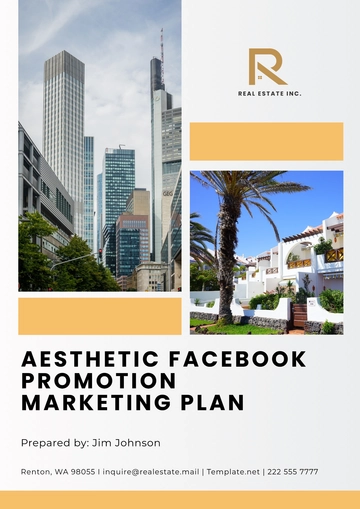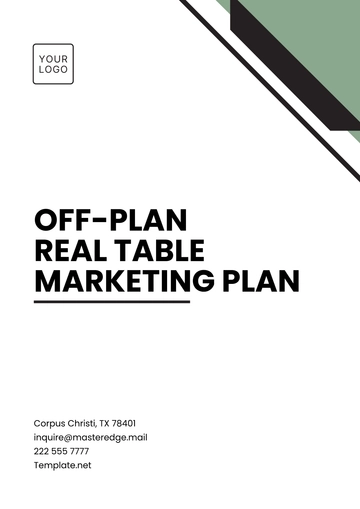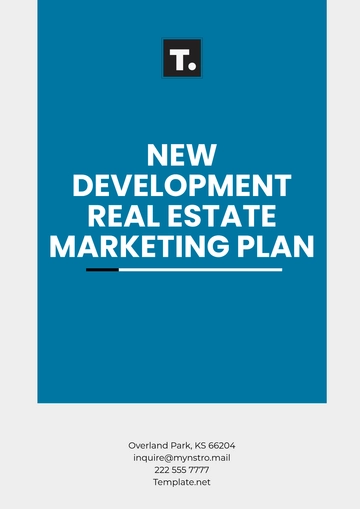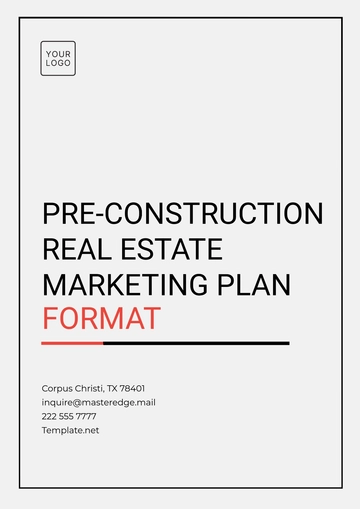Free One Page Annual Marketing Plan
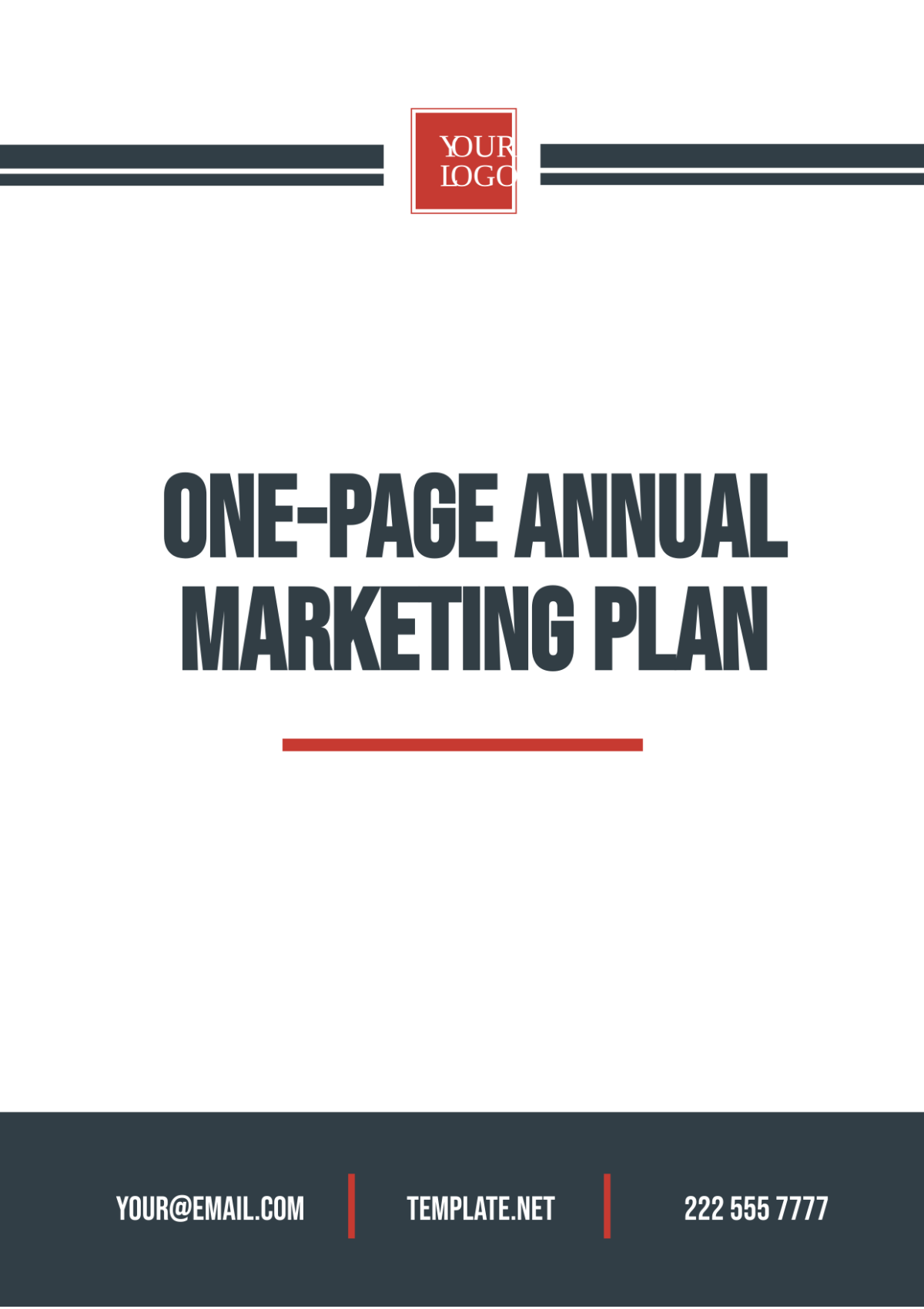
Prepared by: [YOUR NAME]
Company: [YOUR COMPANY NAME]
Address: [YOUR COMPANY ADDRESS]
Website: [YOUR COMPANY WEBSITE]
I. Executive Summary
[Your Company Name]'s marketing department presents a concise overview of key strategies for the upcoming year, aiming to solidify the brand's position as a market leader in the beverage industry.
The plan emphasizes condensing elaborate strategies into a one-page document for easy reference by stakeholders, ensuring alignment with overall business objectives and fostering agile decision-making.
II. Objectives
A. Primary Objectives
Increase brand awareness among millennials and Gen Z by 15%, leveraging innovative digital marketing initiatives and strategic partnerships.
Achieve 10% growth in sales revenue through product innovation, targeted promotions, and expanding distribution channels.
Enhance customer engagement on Instagram by 20%, focusing on interactive content, influencer collaborations, and community-building activities.
B. Secondary Objectives
Launch two new products to penetrate the health-conscious market, addressing consumer demand for healthier beverage options while staying true to [Your Company Name]'s brand identity.
Strengthen brand loyalty through personalized loyalty program rewards, fostering emotional connections with consumers and incentivizing repeat purchases.
Expand market share in Asia-Pacific by 5%, tailoring marketing strategies to local preferences, investing in market research, and building strong partnerships with distributors and retailers.
III. Target Audience
Demographics: Age group between 18-35, predominantly urban dwellers, with a median income of $40,000 annually. The target audience comprises digitally savvy individuals who value authenticity and seek unique experiences.
Psychographics: Health-conscious individuals who prioritize sustainability and social responsibility, actively seeking brands that align with their values and lifestyle choices.
Behaviors: Active on social media platforms, particularly Instagram, TikTok, and Snapchat, where they engage with content that resonates with their interests and aspirations.
IV. Key Messages
Communicate [Your Company Name]'s commitment to sustainability to differentiate from competitors, highlighting initiatives such as eco-friendly packaging, water conservation efforts, and renewable energy usage.
Emphasize refreshment and happiness as core brand values, tapping into universal emotions and nostalgia associated with [Your Company Name]'s iconic branding and advertising campaigns.
Highlight zero-sugar options to address consumer health concerns, promoting products such as [Your Company Name] Zero Sugar and Diet Coke as guilt-free indulgences that cater to diverse dietary preferences.
V. Channels
A. Digital Channels
Social Media: Utilize platforms such as Instagram, TikTok, and Snapchat for engaging content and community building, leveraging user-generated content, interactive polls, and behind-the-scenes stories to foster authentic connections with followers.
Email Marketing: Implement targeted email campaigns to nurture leads and drive conversions, segmenting the audience based on demographics, purchase history, and engagement levels to deliver personalized messaging and offers.
Website: Optimize for SEO and user experience to attract and retain visitors, providing valuable content, interactive features, and seamless navigation to facilitate exploration and purchase decisions.
B. Traditional Channels
Television: Invest in strategic ad placements during major sports events, seasonal holidays, and cultural moments that resonate with the target audience, capturing their attention with memorable storytelling and visually striking imagery.
Print: Utilize health and lifestyle magazines for brand awareness and product promotions, partnering with influential publishers and incorporating QR codes or augmented reality experiences to bridge the gap between print and digital media.
Events: Sponsor or participate in industry events, music festivals, and experiential activations to enhance brand visibility, offering immersive brand experiences, product samples, and exclusive rewards to attendees.
VI. Budget Allocation
Marketing Initiative | Budget Allocation |
|---|---|
Social Media Advertising | $5,000,000 |
Email Marketing Campaigns | $2,000,000 |
Television Ads | $7,000,000 |
Print Materials | $1,500,000 |
Event Sponsorships | $3,500,000 |
VII. Metrics and Evaluation
A. Key Performance Indicators (KPIs):
Monitor and analyze a range of metrics including the frequency of brand mentions, the amount of traffic visiting your website, the rates of conversion from prospects to customers, the level of engagement on social media platforms, the success in retaining customers over time, and the percentage of the market controlled by your company.
B. Timeline:
Conduct monthly or quarterly reviews of performance to assess progress towards goals, and make any necessary adjustments. Establish regular checkpoints to ensure that all activities are aligned with the strategic objectives of the organization.
C. Feedback Mechanisms:
Collect comprehensive feedback from customers, stakeholders, and team members utilizing various methods such as surveys, focus groups, and performance reviews. This approach is instrumental in continuously refining and enhancing strategies, iterating on marketing campaigns, and optimizing the allocation of resources to ensure maximum efficiency and effectiveness in organizational operations.
- 100% Customizable, free editor
- Access 1 Million+ Templates, photo’s & graphics
- Download or share as a template
- Click and replace photos, graphics, text, backgrounds
- Resize, crop, AI write & more
- Access advanced editor
Enhance and Discover the One Page Annual Marketing Plan Template by Template.net. Crafted for efficiency, this editable and customizable gem streamlines your strategy. Seamlessly modify in our Ai Editor Tool, ensuring precision and professionalism. Simplify your marketing journey today with this indispensable tool. Elevate your plans with ease, only at Template.net.

